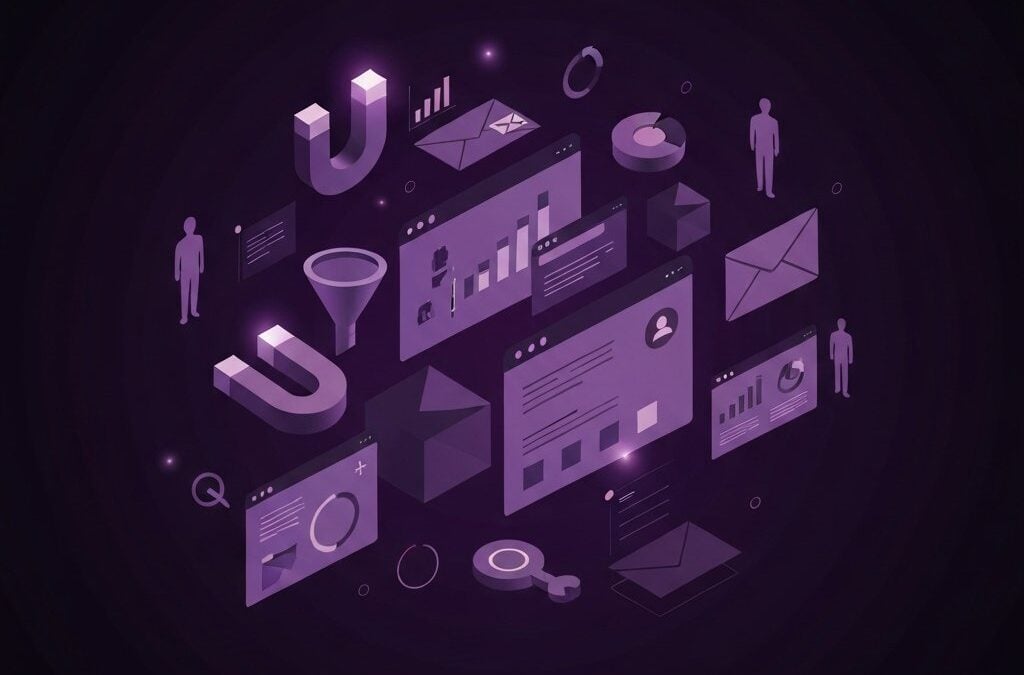The Changing Landscape of Advertising
Ad spending is high across industries. Yet many companies waste money on ineffective campaigns. Traditional approaches rely on guesswork. AI transforms this process. It provides clear insights into who is interested in your product. AI even predicts consumer behavior. This predictive power lets you tweak your ad strategy quickly. The outcome is more precise, results-driven advertising.
- AI reduces guesswork in ad spending.
- It allows faster corrections to optimize campaigns.
- Smart targeting leads to higher engagement.
What is AI in Advertising?
AI in advertising means using machine learning to analyze large amounts of data. The goal is to find the best ways to reach your audience. AI can scan consumer habits, track engagement, and improve personalization. These algorithms learn over time. They refine campaigns based on real-time data. This leads to fewer wasted impressions and a higher return on investment (ROI).
How AI Tools Work
- Data Analysis: They track audience behaviors.
- Predictive Analytics: They forecast trends.
- Path Optimization: They find the best ways to reach customers.
- Personalization: They tailor ads to various audience segments.
- Automation: They schedule and manage ads to boost efficiency.
These functions lower customer acquisition costs. They also help marketers spend their budget smarter.
Key AI Strategies for Maximum ROI
1. Predictive Analytics for Campaign Planning
Predictive analytics is a game-changer. It uses historical data and trends to forecast campaign performance.
- Provides insight into peak engagement times.
- Identifies the platforms where your audience dwells.
- Refines your messaging for maximum appeal.
When you schedule your ads based on these insights, you boost their reach. Forbes notes that predictive analytics can turn uncertainty into powerful decision-making.
2. Programmatic Advertising Optimization
Programmatic ad buying automates the purchase of ads in real-time. AI algorithms choose the best ad slots based on available data. Key benefits include:
- Real-time bidding adjustments.
- Precise targeting by location, age, and interest.
- Immediate changes to improve ad spend efficiency.
Programmatic techniques help reduce wasted impressions. As Harvard Business Review explains, combining programmatic buying with AI yields better outcomes.
3. Personalization of Ads
Personalized ads feel more genuine. AI helps segment customers into micro-groups.
- Tails messaging to the interests of each segment.
- Recommends products relevant to their search behavior.
- Results in higher conversion rates due to relevancy.
Tailored ads build strong customer relationships. Search Engine Journal emphasizes that personalization can drive remarkable increases in conversions.
4. Enhanced A/B Testing and Multivariate Testing
AI automates A/B testing by continuously running different ad versions to identify top performers.
- Tracks click-through rates.
- Monitors customer engagement.
- Adjusts campaigns in real-time.
This ongoing testing provides instant insights, leading to rapid improvements in campaign performance.
5. Smart Attribution Models
Smart attribution models generated by AI account for every ad exposure, rather than relying on traditional single-touch models.
- Clarifies customer journeys.
- Assigns revenue value to early interactions.
- Supports more accurate ROI calculations.
These models help determine which ads deserve more investment, avoiding overspending on low-impact channels.
6. Chatbots and Real-Time Interaction
AI-powered chatbots provide instant user support, driving immediate engagement.
- Respond to common queries.
- Tailor recommendations in real-time.
- Help capture leads with fast follow-ups.
Improved customer service through chatbots can significantly boost campaign ROI.
Best Practices to Implement AI Strategies
- Audit Your Current Ad Spending: Review historical data and identify poor-performing channels.
- Set Clear Goals: Define measurable objectives and KPIs for each campaign.
- Choose the Right Tools: Evaluate AI platforms based on accuracy, ease of use, and cost-efficiency.
- Test and Iterate: Conduct pilot tests with small budgets and refine creative and targeting strategies.
- Monitor and Adjust: Use real-time data to promptly update your ads.
- Invest in Training: Equip your team with the latest AI knowledge and trends.
Implementing these steps ensures every dollar in your ad spend is justified, leading to lower costs and higher returns.
Case Studies and Success Stories
Company Alpha’s Journey
Company Alpha faced high ad expenditures with poor returns. After switching to AI, they achieved:
- A 35% decrease in ad spending.
- A 50% rise in conversion rates.
- Improved customer segmentation and engagement.
Company Bravo’s Transformation
Operating in a competitive industry, Company Bravo combined programmatic strategies with predictive analytics, resulting in:
- Over a 40% increase in campaign ROI.
- More efficient ad scheduling.
- Significantly enhanced customer feedback.
Learning from Failures
Not every campaign is an instant success. AI helps pinpoint what doesn’t work, allowing for quick adjustments and continual learning.
Integrating AI with Your Advertising Platforms
Google Ads and AI
Google leverages AI for ad optimization by:
- Automating bid adjustments.
- Improving keyword targeting.
- Enhancing ad placements.
This integration alleviates manual management, letting you focus on strategic planning.
Facebook and Instagram
Social media platforms utilize AI to enhance ad performance with features like:
- Creative content optimization.
- Audience segmentation suggestions.
- Dynamic advertising formats.
Using these built-in tools can help refine your campaigns and drive better results.
Ethical Considerations and Data Privacy
Protect Customer Data
Ensure that all customer data is handled responsibly, adhering to regulations such as GDPR and CCPA.
Transparency
Clearly inform customers about how their data is used in ad targeting to build trust.
Avoid Algorithmic Bias
Regularly review AI algorithms to avoid biases inherited from historical data, ensuring fair ad placements.
Future Trends in AI Advertising
Voice Search and Conversational Ads
Voice search and interactive ads offer new avenues for user engagement and targeting.
Visual Recognition and Augmented Reality (AR)
With visual recognition and AR, ads become immersive experiences that capture attention.
Integration with IoT Devices
Data from IoT devices is helping create more contextual and effective advertising campaigns.
Conclusion
Wasting money on ads is a challenge many businesses face, but AI offers solutions to turn ad budgets into high-return investments. By leveraging predictive analytics, programmatic buying, and personalization, you can significantly boost your ROI.
Remember to use data-driven decisions, continuously monitor campaign performance, and adjust strategies based on insights. Embrace AI to cut waste and drive growth.
For more insights on marketing strategies, visit our General category page or explore resources like Forbes, Harvard Business Review, and Search Engine Journal.



